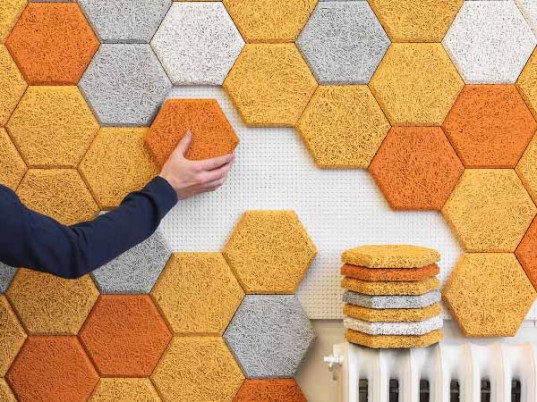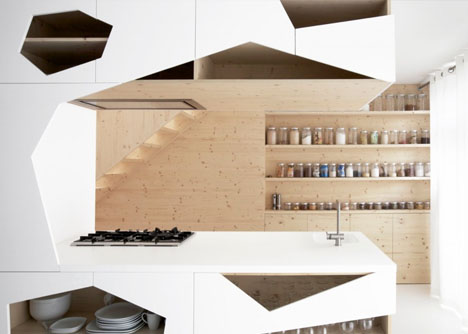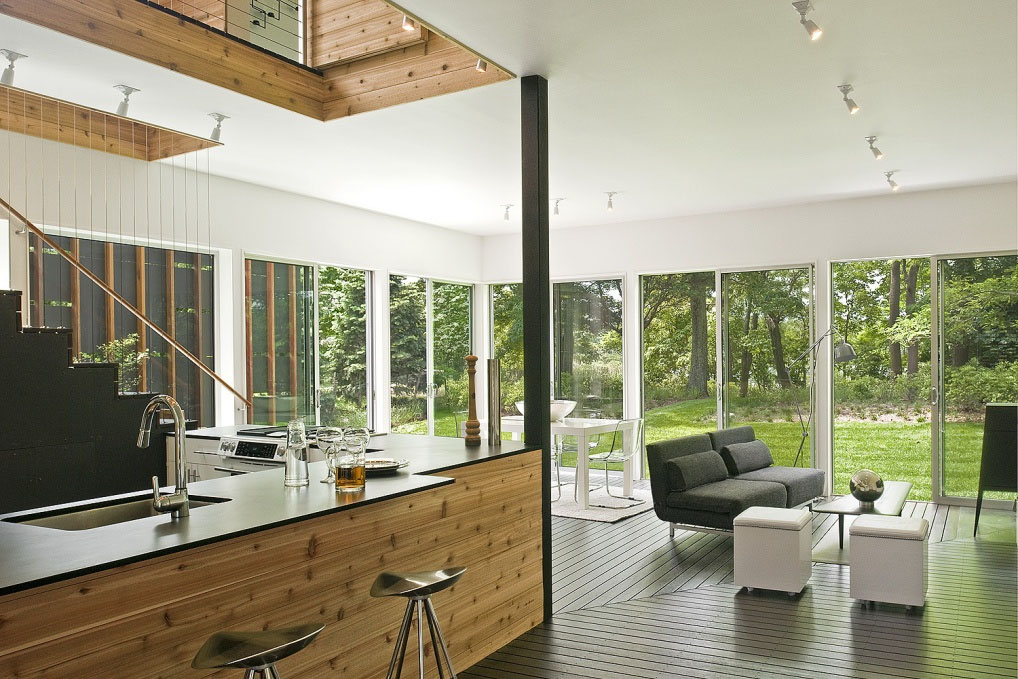Wood wool, known as ‘excelsior,’ is a highly insulating and shock-absorbing material made from slivers of wood cut from logs. It’s been in use for decades for everything from packaging to erosion control mats, but when it’s integrated into architecture or interiors, it’s almost always out of sight. This product by Form Us With Love brings it out from behind the walls, showing off its texture and adding a splash of color.
Hexagon-shaped modular tiles are painted in a variety of colors in custom combinations and can be assembled in all sorts of patterns to create mural-like wall installations. Cement and water mixed with the wood fibers give it superior sound-absorbing properties, enhancing acoustics.
This innovative use of wood is aesthetically pleasing, environmentally friendly and easy to apply as well as being fire- and water-resistant. The project helped revitalize the sole manufacturer of wood wool in Sweden, giving them an intriguing new product to produce.















